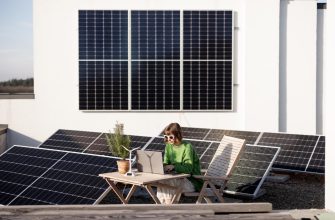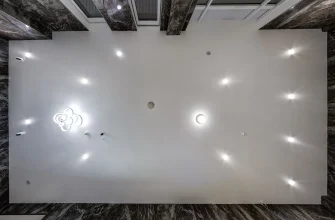Humankind has long tried to harness sunlight as an energy source in an effort to find an alternative to traditional energy sources and reduce dependence on fossil fuels. The first attempts to harness the sun’s energy date back to the 20th century, when scientists sought to create a thermal power plant that could transform solar energy into electricity. However, this idea proved to be ineffective. After carefully analyzing the failure, scientists concluded that intermediate conversions of thermal energy into electricity were not efficient enough due to significant energy losses. Therefore, solar energy should be used directly, without intermediate conversions. This is how Alexander Becquerel’s theory of the photoelectric effect was proposed. However, this theory was tested only 34 years later, in 1873, when semiconductors, the key participants in the photoelectric effect, were discovered. This is where the long and rich history of solar power plants began.
What is a solar panel?
A solar panel, or battery, is a photovoltaic module that collects sunlight and converts it into electricity. The appearance, power, and capabilities of solar panels may vary depending on their type.
Types of solar panels
Solar panels are divided into flexible and rigid photovoltaic modules by design.
- Flexible panels are characterized by high plasticity: they can even be rolled into a tube without damaging them. They are suitable for use in places with uneven surfaces or where it is difficult to install rigid panels, such as on roofs with a non-standard shape, boats, tents, and other mobile objects. Thanks to this flexibility, they are very undemanding to the installation site. However, the main disadvantage of flexible models is their low efficiency, so they are rarely used.
- Rigid panels are traditionally used on roofs and cars. Their efficiency depends on the material they are made of. There are the following types of rigid panels:
- Thin-film panels. They are made of amorphous silicon (the same material is used for flexible panels), indium diselenide, and copper. The efficiency of such models is only 6%.
- Polycrystalline panels. They are made of polycrystals of silicon. Their efficiency reaches 18%.
- Monocrystalline panels. They are made of single crystals of silicon. These panels are more expensive, but their efficiency is much higher – up to 24%. It should be noted that modern experimental mono-panels can reach an efficiency of up to 43%.
How a solar panel works

The design of a photovoltaic module is quite simple. The main part of the panel is silicon photocells (semiconductors), which serve as small power generators. All photocells are interconnected and fixed in a sealed aluminum frame. On top, the semiconductors are covered with a protective polymer film and durable tempered glass.
On the back side of the solar panel is a sealed junction box, where the transition from photovoltaic cells to electrical wires that go to the controller takes place.
Silicon cells reflect the sun’s rays well, which leads to the loss of a significant amount of energy. To reduce these losses, the photocells are coated with a special anti-reflective coating, which increases the efficiency of the solar cell.
How silicon semiconductors work
When the sun’s rays hit a photocell, it heats up and partially absorbs solar energy. This additional energy releases electrons inside the semiconductor. Under the influence of an external electric field, the electrons begin to move in a certain direction, which leads to the generation of an electric current. To generate enough electricity, a large number of photovoltaic cells must be used. Therefore, large solar panels covering several square meters are needed to provide electricity for a house or individual household appliances.
Photovoltaic cells are called silicon cells, but they are not actually made of pure silicon, because pure silicon is reluctant to give up electrons even when exposed to sunlight, which makes it difficult to generate electricity. The reason for this behavior is the strong bonds between silicon atoms. To weaken these bonds, silicon is modified by adding phosphorus atoms to it. The result is alloyed silicon, which is used to make the upper n-layer of the photocell. Under the influence of sunlight, many unbound electrons appear in this layer.
The free electrons tend to move from the negatively charged particles to the positively charged particles of the lower p-layer, which is formed by a combination of silicon and bromine. To prevent this, the photocell design uses an external electric field to force the electrons to move in the opposite direction. This results in an electric current.
The generated electricity is sent to the controller and inverter, which converts direct current into alternating current, because it is alternating current that is necessary for the operation of household appliances, gadgets, and devices. Depending on the type and configuration of the solar power plant, the current can be sent directly to the grid or to the battery. For example, stand-alone systems with batteries are suitable for places without access to a centralized power grid, while grid-tie stations are used to connect directly to the grid to reduce energy costs.
How shadow affects the operation of solar panels
There is a myth that photovoltaic modules can only generate electricity in direct sunlight and stop working in the shade. In fact, modern solar power plants are capable of generating electricity even in cloudy weather, although their power does decrease in such conditions. Let’s see how shade affects the efficiency of different types of panels.
Each photovoltaic cell consists of several layers with n-p junctions, which allows the panels to capture sunlight of different lengths. In standard modules, there are three such layers, and shading even one of them leads to a decrease in power. Modern panels, the so-called split modules, have six such layers. They are made using half-cell technology, which minimizes power losses during shading.
It is also important to choose the right angle of installation of the solar panel to reduce the impact of shadow.








